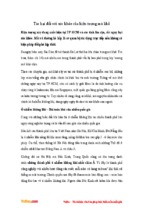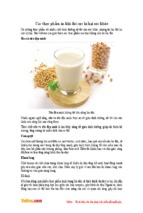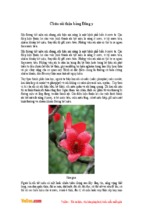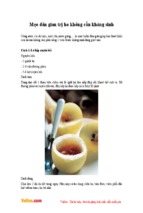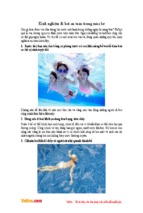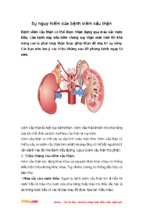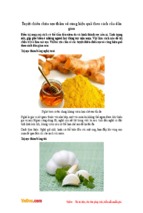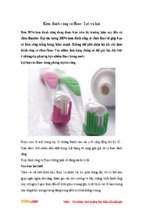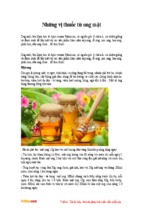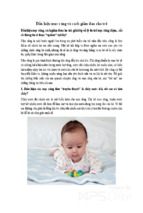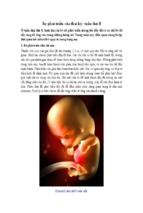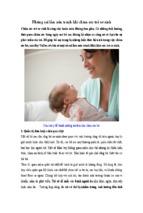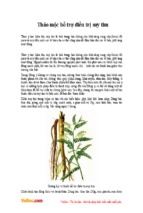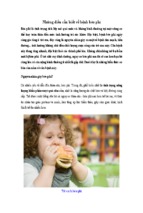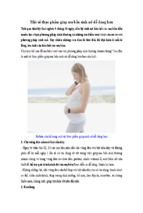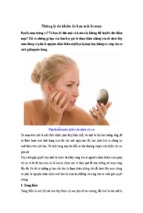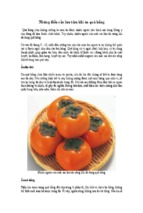Accessed from 128.83.63.20 by nEwp0rt1 on Tue Jun 12 01:43:01 EDT 2012
5328 Test Solutions / Solutions
for 5 minutes with 1 g of aluminum oxide, and filter to
clarify.
Sodium Thioglycolate TS—Dissolve 1.5 g of sodium thioglycolate in 450 mL of water, and add 50 mL of alcohol.
Use within 3 days.
Sodium Thiosulfate TS—Use 0.1 N Sodium Thiosulfate
(see in the section Volumetric Solutions).
Standard Lead Solution—See under Heavy Metals 〈231〉.
Stannous Chloride, Acid, TS—Dissolve 8 g of stannous
chloride in 500 mL of hydrochloric acid. Store in glass containers, and use within 3 months.
Stannous Chloride, Acid, Stronger, TS—Dissolve 40 g
of stannous chloride in 100 mL of hydrochloric acid. Store
in glass containers, and use within 3 months.
Starch TS—Mix 1 g of soluble starch with 10 mg of red
mercuric iodide and sufficient cold water to make a thin
paste. Add 200 mL of boiling water, and boil for 1 minute
with continuous stirring. Cool, and use only the clear solution. [NOTE—Commercially available, stabilized starch indicator solutions may be used, including mercury-free solutions
preserved with other compounds such as salicylic acid.]
Starch, Iodide-Free, TS—Mix 1 g of soluble starch with
sufficient cold water to make a thin paste. While stirring,
add 100 mL of boiling water, and allow to cool. Prepare this
solution immediately before use. Iodide-free starch TS shows
a blue color when 20 mL of potassium iodide solution (1 in
400) and 0.05 mL of an iodine–potassium iodide solution
(prepared by dissolving 127 mg of iodine and 800 mg of
potassium iodide in water and diluting with water to 100
mL) are added to 1 mL of the iodide-free starch TS.
Starch Iodide Paste TS—Heat 100 mL of water in a 250mL beaker to boiling, add a solution of 0.75 g of potassium
iodide in 5 mL of water, then add 2 g of zinc chloride dissolved in 10 mL of water, and, while the solution is boiling,
add, with stirring, a smooth suspension of 5 g of soluble
starch in 30 mL of cold water. Continue to boil for 2 minutes, then cool. Store in well-closed containers in a cold
place.
Starch iodide paste TS must show a definite blue streak
when a glass rod, dipped in a mixture of 1 mL of 0.1 M
sodium nitrite, 500 mL of water, and 10 mL of hydrochloric
acid, is streaked on a smear of the paste.
Starch–Potassium Iodide TS—Dissolve 500 mg of potassium iodide in 100 mL of freshly prepared starch TS. Prepare
this solution fresh.
Stronger Cupric Acetate TS—See Cupric Acetate TS,
Stronger.
Sudan III TS—Dissolve 0.05 g of Sudan III in 25 mL of
alcohol, with warming if necessary. Cool, add 25 mL of
glycerin, and mix. Filter if undissolved material persists.
Sudan IV TS—Dissolve 0.5 g of Sudan IV in chloroform
to make 100 mL.
Sulfanilic Acid TS—Dissolve 800 mg of sulfanilic acid in
100 mL of acetic acid. Store in tight containers.
Diazotized Sulfanilic Acid TS—Dissolve 0.9 g of sulfanilic acid in 9 mL of hydrochloric acid with warming, and
dilute with water to 100 mL. Cool 10 mL of this solution in
iced water, and add 10 mL of a sodium nitrite solution (4.5
in 100) previously cooled in iced water. Allow to stand at 0°
for at least 15 minutes (the solution may be kept for 3 days
at this temperature). Immediately before use, add 20 mL of
sodium carbonate solution (1 in 10).
Sulfanilic-1-Naphthylamine TS—Dissolve 500 mg of sulfanilic acid in 150 mL of acetic acid. Dissolve 100 mg of 1naphthylamine hydrochloride in 150 mL of acetic acid, and
mix the two solutions. The pink color that may develop on
standing can be removed by treatment with zinc.
Sulfanilic-α-Naphthylamine TS—See Sulfanilic-1-Naphthylamine TS.
Sulfomolybdic Acid TS—Dissolve, with the aid of heat,
2.5 g of ammonium molybdate in 20 mL of water, add 50
mL of 12 N sulfuric acid, and dilute with water to 100 mL.
Store this solution in a polyethylene container.
Sulfuric Acid TS—Add a quantity of sulfuric acid of
known concentration to sufficient water to adjust the final
First Supplement to USP 35–NF 30
concentration to between 94.5% and 95.5% (w/w) of
H2SO4.
[NOTE—Since the acid concentration may change upon
standing or upon intermittent use, the concentration should
be checked frequently and solutions assaying more than
95.5% or less than 94.5% discarded.]
Sulfuric Acid–Formaldehyde TS—Add 1 drop of formaldehyde TS to each mL of sulfuric acid, and mix. Prepare this
solution fresh.
Tannic Acid TS—Dissolve 1 g of tannic acid in 1 mL of
alcohol, and dilute with water to 10 mL. Prepare this solution fresh.
Tartaric Acid TS—Dissolve 3 g of tartaric acid in water to
make 10 mL. Prepare this solution fresh.
Tetrabromophenolphthalein Ethyl Ester TS—Dissolve
100 mg of tetrabromophenolphthalein ethyl ester in 90 mL
of glacial acetic acid, and dilute with glacial acetic acid to
100 mL. Prepare this solution fresh.
Tetramethylammonium Hydroxide TS—Use an aqueous
solution containing, in each 100 mL, the equivalent of 10 g
of anhydrous tetramethylammonium hydroxide.
Thioacetamide TS—Dissolve 4 g of thioacetamide in 100
mL of water.
Thioacetamide–Glycerin Base TS—Mix 0.2 mL of thioacetamide TS and 1 mL of glycerin base TS, and heat in a
boiling water bath for 20 seconds. Use the mixture
immediately.
Thorium Nitrate TS—Dissolve 1 g of thorium nitrate in
water to make 100 mL. Filter, if necessary.
Thymol Blue TS—Dissolve 100 mg of thymol blue in
100 mL of alcohol, and filter if necessary.
Thymolphthalein TS—Dissolve 100 mg of thymolphthalein in 100 mL of alcohol, and filter if necessary.
Titanium Trichloride TS—Dissolve 15 g of titanium
trichloride in 100 mL of 10% hydrochloric acid solution.
Titanium Trichloride–Sulfuric Acid TS—Mix carefully 20
mL of titanium trichloride TS in 13 mL of sulfuric acid. Add
sufficient 30% hydrogen peroxide to produce a yellow
color. Heat until white fumes are evolved, allow to cool, and
dilute with water. Repeat the evaporation and addition of
water until a colorless solution is obtained. Dilute with water
to 100 mL.
p-Toluenesulfonic Acid TS—Dissolve 2 g of p-toluenesulfonic acid in 10 mL of a mixture of 7 parts of acetone
and 3 parts of water.
Triketohydrindene Hydrate TS (Ninhydrin TS)—Dissolve
200 mg of triketohydrindene hydrate in water to make 10
mL. Prepare this solution fresh.
Trinitrophenol TS (Picric Acid TS)—Dissolve the equivalent of 1 g of anhydrous trinitrophenol in 100 mL of hot
water. Cool the solution, and filter if necessary.
Triphenyltetrazolium Chloride TS—Dissolve 500 mg of
triphenyltetrazolium chloride in dehydrated alcohol to make
100 mL.
Xylenol Orange TS—Dissolve 100 mg of xylenol orange
in 100 mL of alcohol.
Zinc Uranyl Acetate TS—Dissolve 50 g of uranyl acetate
in a mixture of 15 mL of glacial acetic acid and water to
make 500 mL. Then dissolve 150 g of zinc acetate in a mixture of 15 mL of glacial acetic acid and water to make 500
mL. Mix the two solutions, allow to stand overnight, and
pass through a dry filter, if necessary.
VOLUMETRIC SOLUTIONS
Normal Solutions—Normal solutions are solutions that
contain 1 gram equivalent weight of the active substance in
each 1000 mL of solution; that is, an amount equivalent to
1.0079 g of hydrogen or 7.9997 g of oxygen. Normal solutions and solutions bearing a specific relationship to normal
solutions, and used in volumetric determinations, are designated as follows: normal, 1 N; double-normal, 2 N; half-normal, 0.5 N; tenth-normal, 0.1 N; fiftieth-normal, 0.02 N;
hundredth-normal, 0.01 N; thousandth-normal, 0.001 N.
Official from August 1, 2012
Copyright (c) 2012 The United States Pharmacopeial Convention. All rights reserved.
Accessed from 128.83.63.20 by nEwp0rt1 on Tue Jun 12 01:43:01 EDT 2012
First Supplement to USP 35–NF 30
Molar Solutions—Molar solutions are solutions that contain, in 1000 mL, 1 gram-molecule of the reagent. Thus,
each liter of a molar solution of sulfuric acid contains 98.07
g of H2SO4 and each liter of a molar solution of potassium
ferricyanide contains 329.25 g of K3Fe(CN)6. Solutions containing, in 1000 mL, one-tenth of a gram-molecule of the
reagent are designated “tenth-molar,” 0.1 M; and other
molarities are similarly indicated.
Empirical Solutions—It is frequently difficult to prepare
standard solutions of a desired theoretical normality, and
this is not essential. A solution of approximately the desired
normality is prepared and standardized by titration against a
primary standard solution. The normality factor so obtained
is used in all calculations where such empirical solutions are
employed. If desired, an empirically prepared solution may
be adjusted downward to a given normality provided it is
strong enough to permit dilution.
All volumetric solutions, whether made by direct solution
or by dilution of a stronger solution, must be thoroughly
mixed by shaking before standardization. As the strength of
a standard solution may change upon standing, the factor
should be redetermined frequently.
When solutions of a reagent are used in several normalities, the details of the preparation and standardization are
usually given for the normality most frequently required.
Stronger or weaker solutions are prepared and standardized
in the same general manner as described, using proportionate amounts of the reagent. It is possible in many instances
to prepare lower normalities accurately by making an exact
dilution of a stronger solution. Volumetric solutions prepared
by dilution should be restandardized either as directed for
the stronger solution or by comparison with another volumetric solution having a known ratio to the stronger
solution.
Dilute solutions that are not stable, as, for instance, potassium permanganate 0.01 N and more dilute sodium thiosulfate, are preferably prepared by exactly diluting the higher
normality with thoroughly boiled and cooled water on the
same day they are required for use.
Blank Determinations—Where it is directed that “any
necessary correction” be made by a blank determination,
the determination is to be conducted with the use of the
same quantities of the same reagents treated in the same
manner as the solution or mixture containing the portion of
the substance under assay or test, but with the substance
itself omitted. Appropriate blank corrections are to be made
for all Pharmacopeial titrimetric assays (see Titrimetry 〈541〉).
All Pharmacopeial assays that are volumetric in nature indicate the weight of the substance being assayed to which
each mL of the primary volumetric solution is equivalent. In
general, these equivalents may be derived by simple calculation from the data given under Molecular Formulas and
Weights, in the Reference Tables.
Preparation and Methods of Standardization
of Volumetric Solutions
The following directions give only one method for standardization, but other methods of standardization, capable
of yielding at least the same degree of accuracy, may be
used. The values obtained in the standardization of volumetric solutions are valid for all Pharmacopeial uses of these
solutions, regardless of the instrumental or chemical indicators employed in the individual monographs. Where the apparent normality or molarity of a titrant depends upon the
special conditions of its use, the individual monograph sets
forth the directions for standardizing the reagent in the
specified context. For those salts that usually are available as
certified primary standards, or that are available as highly
purified salts of primary standard quality, it is permissible to
prepare solutions by accurately weighing a suitable quantity
of the salt and dissolving it to produce a specific volume of
solution of known concentration. Acetic, hydrochloric, and
Solutions / Volumetric Solutions 5329
sulfuric acids may be standardized against a sodium hydroxide solution that recently has been standardized against a
certified primary standard.
All volumetric solutions, if practicable, are to be prepared,
standardized, and used at the standard temperature of 25°.
If a titration is carried out with the volumetric solution at a
markedly different temperature, standardize the volumetric
solution used as the titrant at that different temperature, or
make a suitable temperature correction.
Acetic Acid, Double-Normal (2 N)
C2H4O2, 60.05
120.10 g in 1000 mL
Add 116 mL of glacial acetic acid to sufficient water to
make 1000 mL after cooling to room temperature.
Ammonium Thiocyanate, Tenth-Normal (0.1 N)
NH4SCN, 76.12
7.612 g in 1000 mL
Dissolve about 8 g of ammonium thiocyanate in 1000 mL
of water, and standardize the solution as follows.
Accurately measure about 30 mL of 0.1 N silver nitrate VS
into a glass-stoppered flask. Dilute with 50 mL of water,
then add 2 mL of nitric acid and 2 mL of ferric ammonium
sulfate TS, and titrate with the ammonium thiocyanate solution to the first appearance of a red-brown color.
If desirable, 0.1 N ammonium thiocyanate may be replaced by 0.1 N potassium thiocyanate where the former is
directed in various tests and assays.
Bismuth Nitrate, 0.01 M
Bi(NO3)3 · 5H2O, 485.07
1000 mL of this solution contains 4.851 g of bismuth nitrate pentahydrate
Dissolve 4.86 g of bismuth nitrate pentahydrate in 60 mL
of dilute nitric acid, add 0.01 N nitric acid to make 1000
mL, and standardize the solution as follows.
Accurately measure 25 mL of the prepared bismuth nitrate solution, add 50 mL of water and 1 drop of xylenol
orange TS, and titrate the solution with 0.01 M edetate disodium VS until the red color changes to yellow. Calculate
the molarity factor.
Bromine, Tenth-Normal (0.1 N)
Br, 79.90
7.990 g in 1000 mL
Dissolve 3 g of potassium bromate and 15 g of potassium
bromide in water to make 1000 mL, and standardize the
solution as follows.
Accurately measure about 25 mL of the solution into a
500-mL iodine flask, and dilute with 120 mL of water. Add
5 mL of hydrochloric acid, insert the stopper in the flask,
and shake it gently. Then add 5 mL of potassium iodide TS,
again insert the stopper, shake the mixture, allow it to stand
for 5 minutes, and titrate the liberated iodine with 0.1 N
sodium thiosulfate VS, adding 3 mL of starch TS as the
endpoint is approached.
Preserve in dark amber-colored, glass-stoppered bottles.
Ceric Ammonium Nitrate, Twentieth-Normal (0.05 N)
Ce(NO3)4 · 2NH4NO3, 548.22
2.741 g in 100 mL
Official from August 1, 2012
Copyright (c) 2012 The United States Pharmacopeial Convention. All rights reserved.
Accessed from 128.83.63.20 by nEwp0rt1 on Tue Jun 12 01:43:01 EDT 2012
5330 Volumetric Solutions / Solutions
Dissolve 2.75 g of ceric ammonium nitrate in 1 N nitric
acid to obtain 100 mL of solution, and filter. Standardize
the solution as follows.
Accurately measure 10 mL of freshly standardized 0.1 N
ferrous ammonium sulfate VS into a flask, and dilute with
water to about 100 mL. Add 1 drop of nitrophenanthroline
TS, and titrate with the ceric ammonium nitrate solution to
a colorless endpoint.
Ceric Sulfate, Tenth-Normal (0.1 N)
Ce(SO4)2, 332.24
33.22 g in 1000 mL
Use commercially available volumetric standard solution.
Standardize the solution as follows.
Accurately weigh about 0.2 g of sodium oxalate, primary
standard, dried according to the instructions on its label,
and dissolve in 75 mL of water. Add, with stirring, 2 mL of
sulfuric acid that has previously been mixed with 5 mL of
water, mix well, add 10 mL of hydrochloric acid, and heat
to between 70° and 75°. Titrate with 0.1 N ceric sulfate to a
permanent slight yellow color. Each 6.700 mg of sodium
oxalate is equivalent to 1 mL of 0.1 N ceric sulfate.
Cupric Nitrate, Tenth-Normal (0.1 N)
Cu(NO3)2 · 2.5H2O, 232.59
23.26 g in 1000 mL
Cu(NO3)2 · 3H2O, 241.60
24.16 g in 1000 mL
Dissolve 23.3 g of cupric nitrate 2.5 hydrate, or 24.2 g of
the trihydrate, in water to make 1000 mL. Standardize the
solution as follows.
Transfer 20.0 mL of the solution to a 250-mL beaker. Add
2 mL of 5 M sodium nitrate, 20 mL of ammonium acetate
TS, and sufficient water to make 100 mL. Titrate with 0.05
M edetate disodium VS. Determine the endpoint potentiometrically using a cupric ion-double junction reference electrode system. Perform a blank determination, and make any
necessary correction.
Standard Dichlorophenol–Indophenol Solution
To 50 mg of 2,6-dichlorophenol–indophenol sodium that
has been stored in a desiccator over soda lime add 50 mL
of water containing 42 mg of sodium bicarbonate, shake
vigorously, and when the dye is dissolved, add water to
make 200 mL. Filter into an amber, glass-stoppered bottle.
Use within 3 days and standardize immediately before use.
Standardize the solution as follows.
Accurately weigh 50 mg of USP Ascorbic Acid RS, and
transfer to a glass-stoppered, 50-mL volumetric flask with
the aid of a sufficient volume of metaphosphoric–acetic
acids TS to make 50 mL. Immediately transfer 2 mL of the
ascorbic acid solution to a 50-mL conical flask containing 5
mL of the metaphosphoric–acetic acids TS, and titrate rapidly with the dichlorophenol–indophenol solution until a distinct rose-pink color persists for at least 5 seconds. Perform
a blank titration by titrating 7 mL of the metaphosphoric–acetic acids TS plus a volume of water equal to the volume of the dichlorophenol solution used in titrating the ascorbic acid solution. Express the concentration of the
First Supplement to USP 35–NF 30
standard solution in terms of its equivalent in mg of ascorbic acid.
Edetate Disodium, Twentieth-Molar (0.05 M)
C10H14N2Na2O8 · 2H2O, 372.24
18.61 g in 1000 mL
Dissolve 18.6 g of edetate disodium in water to make
1000 mL, and standardize the solution as follows.
Accurately weigh about 200 mg of chelometric standard
calcium carbonate, previously dried at 110° for 2 hours and
cooled in a desiccator, transfer to a 400-mL beaker, add 10
mL of water, and swirl to form a slurry. Cover the beaker
with a watch glass, and introduce 2 mL of diluted hydrochloric acid from a pipet inserted between the lip of the
beaker and the edge of the watch glass. Swirl the contents
of the beaker to dissolve the calcium carbonate. Wash down
the sides of the beaker, the outer surface of the pipet, and
the watch glass with water, and dilute with water to about
100 mL. While stirring the solution, preferably with a magnetic stirrer, add about 30 mL of the edetate disodium solution from a 50-mL buret. Add 15 mL of sodium hydroxide
TS and 300 mg of hydroxy naphthol blue, and continue
the titration with the edetate disodium solution to a blue
endpoint.
Ferric Ammonium Sulfate, Tenth-Normal (0.1 N)
FeNH4(SO4)2 · 12H2O, 482.19
48.22 g in 1000 mL
Dissolve 50 g of ferric ammonium sulfate in a mixture of
300 mL of water and 6 mL of sulfuric acid, dilute with water
to 1000 mL, and mix. Standardize the solution as follows.
Accurately measure about 40 mL of the solution into a
glass-stoppered flask, add 5 mL of hydrochloric acid, mix,
and add a solution of 3 g of potassium iodide in 10 mL of
water. Insert the stopper, allow to stand for 10 minutes,
then titrate the liberated iodine with 0.1 N sodium thiosulfate VS, adding 3 mL of starch TS as the endpoint is approached. Correct for a blank run on the same quantities of
the same reagents.
Store in tight containers, protected from light.
Ferrous Ammonium Sulfate, Tenth-Normal (0.1 N)
Fe(NH4)2(SO4)2 · 6H2O, 392.14
39.21 g in 1000 mL
Dissolve 40 g of ferrous ammonium sulfate in a previously
cooled mixture of 40 mL of sulfuric acid and 200 mL of
water, dilute with water to 1000 mL, and mix. On the day
of use, standardize the solution as follows.
Accurately measure 25 to 30 mL of the solution into a
flask, add 2 drops of orthophenanthroline TS, and titrate
with 0.1 N ceric sulfate VS until the red color is changed to
pale blue.
Hydrochloric Acid, Alcoholic, Tenth-Molar (0.1 M)
HCl, 36.46
Dilute 9.0 mL of hydrochloric acid to 1000 mL with aldehyde–free alcohol.
Official from August 1, 2012
Copyright (c) 2012 The United States Pharmacopeial Convention. All rights reserved.
Accessed from 128.83.63.20 by nEwp0rt1 on Tue Jun 12 01:43:01 EDT 2012
First Supplement to USP 35–NF 30
Change to read:
Hydrochloric Acid, Half-Normal (0.5 N)
HCl, 36.46
18.23 g in 1000 mL
To a 1000-mL volumetric flask containing 40 mL of water
slowly add 43 mL of hydrochloric acid. Cool, and add water
to volume. Standardize the solution as follows.
Accurately weigh about 2.5 g of tromethamine, dried according to the label instructions. ▲Dissolve in 50 mL of
water, and add 2 drops of bromocresol green TS. Titrate
with 0.5 N hydrochloric acid to a pale yellow endpoint.
Each 60.57 mg of tromethamine is equivalent to 1 mL of
0.5 N hydrochloric acid.▲USP35
Hydrochloric Acid, Half-Normal (0.5 N) in Methanol
HCl, 36.46
18.23 g in 1000 mL
To a 1000-mL volumetric flask containing 40 mL of water
slowly add 43 mL of hydrochloric acid. Cool, and add methanol to volume. Standardize the solution as follows.
Accurately weigh about 2.5 g of tromethamine, dried according to the label instructions. Proceed as directed under
Hydrochloric Acid, Normal (1 N), beginning with “Dissolve in
50 mL of water.”
Hydrochloric Acid, Normal (1 N)
HCl, 36.46
36.46 g in 1000 mL
Dilute 85 mL of hydrochloric acid with water to 1000 mL.
Standardize the solution as follows.
Accurately weigh about 5.0 g of tromethamine, dried according to the label instructions. Dissolve in 50 mL of water,
and add 2 drops of bromocresol green TS. Titrate with 1 N
hydrochloric acid to a pale yellow endpoint. Each 121.14
mg of tromethamine is equivalent to 1 mL of 1 N hydrochloric acid.
Iodine, Tenth-Normal (0.1 N)
I, 126.90
12.69 g in 1000 mL
Dissolve about 14 g of iodine in a solution of 36 g of potassium iodide in 100 mL of water, add 3 drops of hydrochloric acid, dilute with water to 1000 mL, and standardize
the solution as follows.
Transfer 25.0 mL of the iodine solution to a 250-mL flask,
dilute with water to 100 mL, add 1 mL of 1 N hydrochloric
acid, swirl gently to mix, and titrate with 0.1 N sodium
thiosulfate VS until the solution has a pale yellow color. Add
2 mL of starch TS and continue titrating until the solution is
colorless.
Preserve in amber-colored, glass-stoppered bottles.
Solutions / Volumetric Solutions 5331
Iodine, Twentieth-Normal (0.05 N)
I, 126.90
6.33 g in 1000 mL
Dissolve about 6.5 g of iodine in a solution of 18 g of
potassium iodide in 100 mL of water, add 3 drops of hydrochloric acid, dilute with water to 1000 mL, and standardize
the solution as follows.
Transfer 50.0 mL of the iodine solution to a 250-mL flask,
dilute with water to 100 mL, add 1 mL of 1 N hydrochloric
acid, swirl gently to mix, and titrate with 0.1 N sodium
thiosulfate VS until the solution has a pale yellow color. Add
2 mL of starch TS, and continue titrating until the solution is
colorless.
Iodine, Hundredth-Normal (0.01 N)
I, 126.90
1.269 g in 1000 mL
Dissolve about 1.4 g of iodine in a solution of 3.6 g of
potassium iodide in 100 mL of water, add 3 drops of hydrochloric acid, dilute with water to 1000 mL, and standardize
the solution as follows.
Transfer 100.0 mL of iodine solution to a 250-mL flask,
add 1 mL of 1 N hydrochloric acid, swirl gently to mix, and
titrate with 0.1 N sodium thiosulfate VS until the solution
has a pale yellow color. Add 2 mL of starch TS, and continue titrating until the solution is colorless.
Preserve in amber-colored, glass-stoppered bottles.
Lead Nitrate, Hundredth-Molar (0.01 M)
Pb (NO3)2, 331.21
3.312 g in 1000 mL
Xylenol Orange Triturate—Triturate 1 part of xylenol orange with 99 parts of potassium nitrate.
0.1 M Lead Nitrate—Dissolve 33 g of lead nitrate in 1000
mL of water. Standardize the solution as follows. To 20.0
mL of the lead nitrate solution add 300 mL of water. Add
about 50 mg of Xylenol Orange Triturate, and add methenamine until the solution becomes violet-pink. Titrate with 0.1
M edetate disodium VS to the yellow endpoint. Calculate
the molarity.
Dilute 50.0 mL of 0.1 M Lead Nitrate to 500.0 mL with
water.
Lead Perchlorate, Tenth-Molar (0.1 M)
Pb(ClO4)2 · 3H2O, 460.15
46.01 g in 1000 mL
Dissolve 46 g of lead perchlorate in water, and dilute with
water to 1000.0 mL. Accurately weigh about 150 mg of
sodium sulfate, previously dried at 105° for 4 hours, and
dissolve in 50 mL of water. Add 50 mL of a mixture of
water and formaldehyde (1:1), and stir for about 1 minute.
Determine the endpoint potentiometrically using a lead ion
selective electrode. Perform a blank determination, and
make any necessary corrections. Each 14.204 mg of sodium
sulfate is equivalent to 1 mL of 0.1 M lead perchlorate.
Official from August 1, 2012
Copyright (c) 2012 The United States Pharmacopeial Convention. All rights reserved.
Accessed from 128.83.63.20 by nEwp0rt1 on Tue Jun 12 01:43:01 EDT 2012
5332 Volumetric Solutions / Solutions
Lead Perchlorate, Hundredth-Molar (0.01 M)
Pb(ClO4)2, 406.10
Accurately pipet 100 mL of commercially available 0.1 M
lead perchlorate solution into a 1000-mL volumetric flask,
add a sufficient quantity of water to make 1000 mL, and
standardize the solution as follows.
Accurately pipet 50 mL of 0.01 M lead perchlorate solution, as prepared above, into a 250-mL conical flask. Add 3
mL of aqueous hexamethylenetetramine solution (2.0 g per
100 mL) and 4 drops of 0.5% xylenol orange indicator prepared by adding 500 mg of xylenol orange to 10 mL of
alcohol and diluting with water to 100 mL. (Omit the alcohol if the sodium salt of the indicator is used). Titrate with
0.05 M edetate disodium VS to a yellow endpoint.
Lithium Methoxide, Fiftieth-Normal (0.02 N) in
Methanol
CH3LiO, 37.97
759.6 mg in 1000 mL
Dissolve 0.12 g of freshly cut lithium metal in 150 mL of
methanol, cooling the flask during addition of the metal.
When the reaction is complete, add 850 mL of methanol,
and mix. Store the solution preferably in the reservoir of an
automatic delivery buret suitably protected from carbon dioxide and moisture. Standardize the solution by titration
against benzoic acid as described under Sodium Methoxide,
Tenth-Normal (0.1 N) (in Toluene), but use only 100 mg of
benzoic acid. Each 2.442 mg of benzoic acid is equivalent
to 1 mL of 0.02 N lithium methoxide.
[NOTE—Restandardize the solution frequently.]
Lithium Methoxide, Tenth-Normal (0.1 N) in
Chlorobenzene
CH3OLi, 37.97
3.798 g in 1000 mL
Dissolve 700 mg of freshly cut lithium metal in 150 mL of
methanol, cooling the flask during addition of the metal.
When the reaction is complete, add 850 mL of chlorobenzene. If cloudiness or precipitation occurs, add sufficient
methanol to clarify the solution. Store preferably in the reservoir of an automatic delivery buret suitably protected from
carbon dioxide and moisture. Standardize the solution by
titration against benzoic acid as described under Sodium
Methoxide, Tenth-Normal (0.1 N) (in Toluene).
[NOTE—Restandardize the solution frequently.]
Lithium Methoxide, Tenth-Normal (0.1 N) in Methanol
CH3OLi, 37.97
3.798 g in 1000 mL
Dissolve 700 mg of freshly cut lithium metal in 150 mL of
methanol, cooling the flask during addition of the metal.
When the reaction is complete, add 850 mL of methanol. If
cloudiness or precipitation occurs, add sufficient methanol
to clarify the solution. Store preferably in the reservoir of an
automatic delivery buret suitably protected from carbon dioxide and moisture. Standardize the solution by titration
against benzoic acid as described under Sodium Methoxide,
Tenth-Normal (0.1 N) (in Toluene).
First Supplement to USP 35–NF 30
[NOTE—Restandardize the solution frequently.]
Lithium Methoxide, Tenth-Normal (0.1 N) in Toluene
CH3OLi, 37.97
3.798 g in 1000 mL
Dissolve 700 mg of freshly cut lithium metal in 150 mL of
methanol, cooling the flask during addition of the metal.
When reaction is complete, add 850 mL of toluene. If
cloudiness or precipitation occurs, add sufficient methanol
to clarify the solution. Store preferably in the reservoir of an
automatic delivery buret suitably protected from carbon dioxide and moisture. Standardize the solution by titration
against benzoic acid as described under Sodium Methoxide,
Tenth-Normal (0.1 N) (in Toluene).
[NOTE—Restandardize the solution frequently.]
Magnesium Chloride, 0.01 M
MgCl2 · 6H2O, 203.30
2.0330 g in 1000 mL
Dissolve about 2.04 g of magnesium chloride in 1000 mL
of freshly boiled and cooled water, and standardize the solution as follows.
Accurately measure 25 mL of the prepared magnesium
chloride solution. Add 50 mL of water, 3 mL of ammonia–ammonium chloride buffer TS and 0.04 g of eriochrome black T–sodium chloride reagent. Titrate with 0.05
M edetate disodium VS until the red-purple color of the
solution changes to blue-purple.
Mercuric Nitrate, Tenth-Molar (0.1 M)
Hg(NO3)2, 324.60
32.46 g in 1000 mL
Dissolve about 35 g of mercuric nitrate in a mixture of 5
mL of nitric acid and 500 mL of water, and dilute with
water to 1000 mL. Standardize the solution as follows.
Transfer an accurately measured volume of about 20 mL
of the solution to a conical flask, and add 2 mL of nitric acid
and 2 mL of ferric ammonium sulfate TS. Cool to below
20°, and titrate with 0.1 N ammonium thiocyanate VS to
the first appearance of a permanent brownish color.
Oxalic Acid, Tenth-Normal (0.1 N)
H2C2O4 · 2H2O, 126.07
6.303 g in 1000 mL
Dissolve 6.45 g of oxalic acid in water to make 1000 mL.
Standardize by titration against freshly standardized 0.1 N
potassium permanganate VS as directed under Potassium
Permanganate, Tenth-Normal (0.1 N).
Preserve in glass-stoppered bottles, protected from light.
Official from August 1, 2012
Copyright (c) 2012 The United States Pharmacopeial Convention. All rights reserved.
Accessed from 128.83.63.20 by nEwp0rt1 on Tue Jun 12 01:43:01 EDT 2012
First Supplement to USP 35–NF 30
Perchloric Acid, Tenth-Normal (0.1 N) in Dioxane
Mix 8.5 mL of perchloric acid with sufficient dioxane to
make 1000 mL. Standardize the solution as follows.
Accurately weigh about 700 mg of potassium biphthalate,
previously crushed lightly and dried at 120° for 2 hours, and
dissolve in 50 mL of glacial acetic acid in a 250-mL flask.
Add 2 drops of crystal violet TS, and titrate with the perchloric acid solution until the violet color changes to bluish
green. Carry out a blank determination. Each 20.423 mg of
potassium biphthalate is equivalent to 1 mL of 0.1 N perchloric acid.
Perchloric Acid, Tenth-Normal (0.1 N) in Glacial Acetic
Acid
HClO4, 100.46
10.05 g in 1000 mL
[NOTE—Where called for in the tests and assays, this volumetric solution is specified as “0.1 N perchloric acid.” Thus,
where 0.1 N or other strength of this volumetric solution is
specified, the solution in glacial acetic acid is to be used,
unless the words “in dioxane” are stated. [See also Perchloric
Acid, Tenth-Normal (0.1 N) in Dioxane.]]
Mix 8.5 mL of perchloric acid with 500 mL of glacial acetic acid and 21 mL of acetic anhydride, cool, and add glacial acetic acid to make 1000 mL. Alternatively, the solution
may be prepared as follows. Mix 11 mL of 60 percent perchloric acid with 500 mL of glacial acetic acid and 30 mL of
acetic anhydride, cool, and add glacial acetic acid to make
1000 mL.
Allow the prepared solution to stand for 1 day for the
excess acetic anhydride to be combined, and determine the
water content by Method I (see Water Determination 〈921〉),
except to use a test specimen of about 5 g of the 0.1 N
perchloric acid that is expected to contain approximately 1
mg of water and the Reagent (see Reagent under Method Ia
in Water Determination 〈921〉) diluted such that 1 mL is
equivalent to about 1 to 2 mg of water. If the water content exceeds 0.5%, add more acetic anhydride. If the solution contains no titratable water, add sufficient water to obtain a content of between 0.02% and 0.5% of water. Allow
the solution to stand for 1 day, and again titrate the water
content. The solution so obtained contains between 0.02%
and 0.5% of water, indicating freedom from acetic
anhydride.
Standardize the solution as follows.
Accurately weigh about 700 mg of potassium biphthalate,
previously crushed lightly and dried at 120° for 2 hours, and
dissolve it in 50 mL of glacial acetic acid in a 250-mL flask.
Add 2 drops of crystal violet TS, and titrate with the perchloric acid solution until the violet color changes to bluegreen. Deduct the volume of the perchloric acid consumed
by 50 mL of the glacial acetic acid. Each 20.423 mg of
potassium biphthalate is equivalent to 1 mL of 0.1 N perchloric acid.
Potassium Arsenite, Tenth-Normal (0.1 N)
KAsO2, 146.02
7.301 g in 1000 mL
Dissolve 4.9455 g of arsenic trioxide primary standard,
previously dried at 105° for 1 hour, in 75 mL of 1 N potassium hydroxide. Add 40 g of potassium bicarbonate, dissolved in about 200 mL of water, and dilute with water to
1000.0 mL.
Solutions / Volumetric Solutions 5333
Potassium Bromate, Tenth-Normal (0.1 N)
KBrO3, 167.00
2.784 g in 1000 mL
Dissolve 2.784 g of potassium bromate in water to make
1000 mL, and standardize the solution as follows.
Transfer an accurately measured volume of about 40 mL
of the solution to a glass-stoppered flask, add 3 g of potassium iodide, and follow with 3 mL of hydrochloric acid. Allow to stand for 5 minutes, then titrate the liberated iodine
with 0.1 N sodium thiosulfate VS, adding 3 mL of starch TS
as the endpoint is approached. Correct for a blank run on
the same quantities of the same reagents, and calculate the
normality.
Potassium Bromide–Bromate, Tenth-Normal (0.1 N)
Dissolve 2.78 g of potassium bromate (KBrO3) and 12.0 g
of potassium bromide (KBr) in water, and dilute with water
to 1000 mL. Standardize by the procedure set forth for Potassium Bromate, Tenth-Normal (0.1 N).
Potassium Dichromate, Tenth-Normal (0.1 N)
K2Cr2O7, 294.18
4.903 g in 1000 mL
Dissolve about 5 g of potassium dichromate in 1000 mL
of water. Standardize the solution as follows.
Transfer 25.0 mL of this solution to a glass-stoppered,
500-mL flask, add 2 g of potassium iodide (free from iodate), dilute with 200 mL of water, add 5 mL of hydrochloric acid, allow to stand for 10 minutes in a dark place, and
titrate the liberated iodine with 0.1 N sodium thiosulfate VS,
adding 3 mL of starch TS as the endpoint is approached.
Carry out a blank determination.
Potassium Ferricyanide, Twentieth-Molar (0.05 M)
K3Fe(CN)6, 329.24
16.46 g in 1000 mL
Dissolve about 17 g of potassium ferricyanide in water to
make 1000 mL. Standardize the solution as follows.
Transfer 50.0 mL of this solution to a glass-stoppered,
500-mL flask, dilute with 50 mL of water, add 10 mL of
potassium iodide TS and 10 mL of dilute hydrochloric acid,
and allow to stand for 1 minute. Then add 15 mL of zinc
sulfate solution (1 in 10), and titrate the liberated iodine
with 0.1 N sodium thiosulfate VS, adding 3 mL of starch TS
as the endpoint is approached.
Protect from light, and restandardize before use.
Potassium Hydroxide, Alcoholic, Half-Normal (0.5 N)
28.06 g in 1000 mL
Dissolve about 34 g of potassium hydroxide in 20 mL of
water, and add aldehyde-free alcohol to make 1000 mL.
Allow the solution to stand in a tightly stoppered bottle for
24 hours. Then quickly decant the clear supernatant into a
Official from August 1, 2012
Copyright (c) 2012 The United States Pharmacopeial Convention. All rights reserved.
Accessed from 128.83.63.20 by nEwp0rt1 on Tue Jun 12 01:43:01 EDT 2012
5334 Volumetric Solutions / Solutions
suitable, tight container, and standardize the solution as
follows.
Accurately measure about 25 mL of 0.5 N hydrochloric
acid VS. Dilute with 50 mL of water, add 2 drops of phenolphthalein TS, and titrate with the alcoholic potassium hydroxide solution until a permanent, pale pink color is
produced.
[NOTE—Store in tightly stoppered bottles, protected from
light.]
Potassium Hydroxide, Alcoholic, Tenth-Molar (0.1 M)
KOH, 56.11
Dilute 20 mL of 0.5 M alcoholic potassium hydroxide to
100.0 mL with aldehyde-free alcohol.
Potassium Hydroxide, Methanolic, Tenth-Normal (0.1
N)
5.612 g in 1000 mL
Dissolve about 6.8 g of potassium hydroxide in 4 mL of
water, and add methanol to make 1000 mL. Allow the solution to stand in a tightly stoppered bottle for 24 hours.
Then quickly decant the clear supernatant into a suitable,
tight container, and standardize the solution as follows.
Accurately measure about 25 mL of 0.1 N hydrochloric
acid VS. Dilute with 50 mL of water, add 2 drops of phenolphthalein TS, and titrate with the methanolic potassium hydroxide solution until a permanent, pale pink color is
produced.
[NOTE—Store in tightly stoppered bottles, protected from
light.]
Potassium Hydroxide, Normal (1 N)
KOH, 56.11
56.11 g in 1000 mL
Dissolve 68 g of potassium hydroxide in about 950 mL of
water. Add a freshly prepared saturated solution of barium
hydroxide until no more precipitate forms. Shake the mixture thoroughly, and allow it to stand overnight in a stoppered bottle. Decant the clear liquid, or filter the solution in
a tight, polyolefin bottle, and standardize by the procedure
set forth for Sodium Hydroxide, Normal (1 N).
Potassium Iodate, Twentieth-Molar (0.05 M)
KIO3, 214.00
10.70 g in 1000 mL
Dissolve 10.700 g of potassium iodate, previously dried at
110° to constant weight, in water to make 1000.0 mL.
Standardize the solution as follows: to 15.0 mL of solution
in a 250-mL iodine flask, add 3 g of potassium iodide and 3
mL of hydrochloric acid previously diluted with 10 mL of
water. Stopper immediately, and allow to stand in the dark
for 5 minutes. Then add 50 mL of cold water, and titrate
the liberated iodine with freshly standardized 0.1 N sodium
thiosulfate. Add 3 mL of starch indicator solution near the
First Supplement to USP 35–NF 30
end of the titration, and continue to the absence of the
blue-starch-iodine complex.
Potassium Permanganate, Tenth-Normal (0.1 N)
KMnO4, 158.03
3.161 g in 1000 mL
Dissolve about 3.3 g of potassium permanganate in 1000
mL of water in a flask, and boil the solution for about 15
minutes. Insert the stopper in the flask, allow it to stand for
at least 2 days, and filter through a fine-porosity, sinteredglass crucible. If necessary, the bottom of the sintered-glass
crucible may be lined with a pledget of glass wool. Standardize the solution as follows.
Accurately weigh about 200 mg of sodium oxalate, dried
according to the instructions on its label, and dissolve it in
250 mL of water. Add 7 mL of sulfuric acid, heat to about
70°, and then slowly add the permanganate solution from a
buret, with constant stirring, until a pale pink color, which
persists for 15 seconds, is produced. The temperature at the
conclusion of the titration should be not less than 60°. Calculate the normality. Each 6.700 mg of sodium oxalate is
equivalent to 1 mL of 0.1 N potassium permanganate.
Since potassium permanganate is reduced on contact
with organic substances such as rubber, the solution must
be handled in apparatus entirely of glass or other suitably
inert material. It should be frequently restandardized. Store
in glass-stoppered, amber-colored bottles.
Potassium Thiocyanate, Tenth-Normal (0.1 N)
KSCN, 97.18
9.72 g in 1000 mL
Weigh exactly 9.72 g of potassium thiocyanate, previously
dried for 2 hours at 110°, transfer to a 1-L volumetric flask,
dilute with water to volume, and mix well. Standardize as
follows: transfer 40.0 mL of freshly standardized 0.1 N silver
nitrate VS to a 250-mL Erlenmeyer flask; and add 100 mL of
water, 1 mL of nitric acid, and 2 mL of ferric ammonium
sulfate TS. Titrate with the potassium thiocyanate solution,
with agitation, to a permanent light pinkish-brown color of
the supernatant.
Silver Nitrate, Tenth-Normal (0.1 N)
AgNO3, 169.87
16.99 g in 1000 mL
Dissolve about 17.5 g of silver nitrate in 1000 mL of
water, and standardize the solution as follows.
Transfer about 100 mg, accurately weighed, of reagentgrade sodium chloride, previously dried at 110° for 2 hours,
to a 150-mL beaker, dissolve in 5 mL of water, and add 5
mL of acetic acid, 50 mL of methanol, and about 0.5 mL of
eosin Y TS. Stir, preferably with a magnetic stirrer, and titrate with the silver nitrate solution.
Official from August 1, 2012
Copyright (c) 2012 The United States Pharmacopeial Convention. All rights reserved.
Accessed from 128.83.63.20 by nEwp0rt1 on Tue Jun 12 01:43:01 EDT 2012
First Supplement to USP 35–NF 30
Sodium Arsenite, Twentieth-Molar (0.05 M)
NaAsO2 129.91
6.496 g in 1000 mL
Transfer 4.9455 g of arsenic trioxide, which has been pulverized and dried at 100° to constant weight, to a 1000-mL
volumetric flask, dissolve it in 40 mL of 1 N sodium hydroxide, and add 1 N sulfuric acid or 1 N hydrochloric acid until
the solution is neutral or only slightly acid to litmus. Add
30 g of sodium bicarbonate, dilute with water to volume,
and mix.
Sodium Hydroxide, Alcoholic, Tenth-Normal (0.1 N)
NaOH, 40.00
To 250 mL of alcohol add 2 mL of a 50% (w/v) solution
of sodium hydroxide.
Dissolve about 200 mg of benzoic acid, accurately
weighed, in 10 mL of alcohol and 2 mL of water. Add 2
drops of phenolphthalein TS, and titrate with the alcoholic
sodium hydroxide solution until a permanent pale pink color
is produced.
Change to read:
Sodium Hydroxide, Normal (1 N)
NaOH, 40.00
40.00 g in 1000 mL
Dissolve 162 g of sodium hydroxide in 150 mL of carbon
dioxide-free water, cool the solution to room temperature,
and filter through hardened filter paper. Transfer 54.5 mL of
the clear filtrate to a tight, polyolefin container, and dilute
with carbon dioxide-free water to 1000 mL.
Accurately weigh about 5 g of potassium biphthalate, previously crushed lightly and dried at 120° for 2 hours, and
dissolve in 75 mL of carbon dioxide-free water. Add 2 drops
of phenolphthalein TS, and titrate with the sodium hydroxide solution to the production of a permanent pink color.
Each ▲204.22 mg▲USP35 of potassium biphthalate is equivalent to 1 mL of 1 N sodium hydroxide.
▲
▲USP35
[NOTES—(1) Solutions of alkali hydroxides absorb carbon
dioxide when exposed to air. They should be preserved in
bottles having well-fitted, suitable stoppers, provided with a
tube filled with a mixture of sodium hydroxide and lime
(soda-lime tubes) so that air entering the container must
pass through this tube, which will absorb the carbon dioxide. (2) Prepare solutions of lower concentration (e.g., 0.1
N, 0.01 N) by quantitatively diluting accurately measured
volumes of the 1 N solution with sufficient carbon dioxidefree water to yield the desired concentration.]
Restandardize the solution frequently.
Sodium Methoxide, Half-Normal (0.5 N) in Methanol
CH3ONa, 54.02
27.01 g in 1000 mL
Weigh 11.5 g of freshly cut sodium metal, and cut into
small cubes. Place about 0.5 mL of anhydrous methanol in a
round-bottom, 250-mL flask equipped with a ground-glass
joint, add 1 cube of the sodium metal, and, when the reaction has ceased, add the remaining sodium metal to the
flask. Connect a water-jacketed condenser to the flask, and
slowly add 250 mL of anhydrous methanol, in small por-
Solutions / Volumetric Solutions 5335
tions, through the top of the condenser. Regulate the addition of the methanol so that the vapors are condensed and
do not escape through the top of the condenser. After addition of the methanol is complete, connect a drying tube to
the top of the condenser, and allow the solution to cool.
Transfer the solution to a 1-L volumetric flask, dilute with
anhydrous methanol to volume, and mix. Standardize the
solution as follows.
Accurately measure about 20 mL of freshly standardized
1 N hydrochloric acid VS into a 250-mL conical flask, add
0.25 mL of phenolphthalein TS, and titrate with the sodium
methoxide solution to the first appearance of a permanent
pink color.
Sodium Methoxide, Tenth-Normal (0.1 N) in Toluene
CH3ONa, 54.02
5.402 g in 1000 mL
Cool in ice-water 150 mL of methanol contained in a
1000-mL volumetric flask, and add, in small portions, about
2.5 g of freshly cut sodium metal. When the metal has dissolved, add toluene to make 1000 mL, and mix. Store preferably in the reservoir of an automatic delivery buret suitably protected from carbon dioxide and moisture.
Standardize the solution as follows.
Accurately weigh about 400 mg of primary standard benzoic acid, and dissolve in 80 mL of dimethylformamide in a
flask. Add 3 drops of a 1 in 100 solution of thymol blue in
dimethylformamide, and titrate with the sodium methoxide
to a blue endpoint. Correct for the volume of the sodium
methoxide solution consumed by 80 mL of the dimethylformamide. Each 12.21 mg of benzoic acid is equivalent to
1 mL of 0.1 N sodium methoxide.
[NOTES—(1) To eliminate any turbidity that may form following dilution with toluene, add methanol (25 to 30 mL
usually suffices) until the solution is clear. (2) Restandardize
the solution frequently.]
Sodium Nitrite, Tenth-Molar (0.1 M)
NaNO2, 69.00
6.900 g in 1000 mL
Dissolve 7.5 g of sodium nitrite in water to make 1000
mL, and standardize the solution as follows.
Accurately weigh about 500 mg of USP Sulfanilamide RS,
previously dried at 105° for 3 hours, and transfer to a suitable beaker. Add 20 mL of hydrochloric acid and 50 mL of
water, stir until dissolved, and cool to 15°. Maintaining the
temperature at about 15°, titrate slowly with the sodium
nitrite solution, placing the buret tip below the surface of
the solution to preclude air oxidation of the sodium nitrite,
and stir the solution gently with a magnetic stirrer, but
avoid pulling a vortex of air beneath the surface. Use the
indicator specified in the individual monograph, or, if a
potentiometric procedure is specified, determine the
endpoint electrometrically, using platinum–calomel or platinum–platinum electrodes. When the titration is within 1
mL of the endpoint, add the titrant in 0.1-mL portions, and
allow 1 minute between additions. Each 17.22 mg of sulfanilamide is equivalent to 1 mL of 0.1000 M sodium nitrite.
Official from August 1, 2012
Copyright (c) 2012 The United States Pharmacopeial Convention. All rights reserved.
Accessed from 128.83.63.20 by nEwp0rt1 on Tue Jun 12 01:43:01 EDT 2012
5336 Volumetric Solutions / Solutions
Sodium Tetraphenylboron, Fiftieth-Molar (0.02 M)
NaB(C6H5)4, 342.22
6.845 g in 1000 mL
Dissolve an amount of sodium tetraphenylboron, equivalent to 6.845 g of NaB(C6H5)4, in water to make 1000 mL,
and standardize the solution as follows.
Pipet two 75-mL portions of the solution into separate
beakers, and to each add 1 mL of acetic acid and 25 mL of
water. To each beaker add, slowly and with constant stirring, 25 mL of potassium biphthalate solution (1 in 20), and
allow to stand for 2 hours. Filter one of the mixtures
through a filtering crucible, and wash the precipitate with
cold water. Transfer the precipitate to a container, add 50
mL of water, shake intermittently for 30 minutes, filter, and
use the filtrate as the saturated potassium tetraphenylborate
solution in the following standardization procedure. Filter
the second mixture through a tared filtering crucible, and
wash the precipitate with three 5-mL portions of saturated
potassium tetraphenylborate solution. Dry the precipitate at
105° for 1 hour. Each g of potassium tetraphenylborate
(KTPB) is equivalent to 955.1 mg of sodium
tetraphenylboron.
[NOTE—Prepare this solution just before use.]
Sodium Thiosulfate, Tenth-Normal (0.1 N)
Na2S2O3 · 5H2O, 248.19
24.82 g in 1000 mL
Dissolve about 26 g of sodium thiosulfate and 200 mg of
sodium carbonate in 1000 mL of recently boiled and cooled
water. Standardize the solution as follows.
Accurately weigh about 210 mg of primary standard potassium dichromate, previously pulverized and dried according to the instructions on its label, if necessary, and dissolve
in 100 mL of water in a glass-stoppered, 500-mL flask. Swirl
to dissolve the solid, remove the stopper, and quickly add
3 g of potassium iodide, 2 g of sodium bicarbonate, and 5
mL of hydrochloric acid. Insert the stopper gently in the
flask, swirl to mix, and allow to stand in the dark for exactly
10 minutes. Rinse the stopper and the inner walls of the
flask with water, and titrate the liberated iodine with the
sodium thiosulfate solution until the solution is yellowish
green in color. Add 3 mL of starch TS, and continue the
titration until the blue color is discharged. Perform a blank
determination.
Restandardize the solution as frequently as supported by
laboratory stability data. In the absence of such data,
restandardize the solution weekly.
Sulfuric Acid, Half-Normal (0.5 N) in Alcohol
H2SO4, 98.08
24.52 g in 1000 mL
Add slowly, with stirring, 13.9 mL of sulfuric acid to a
sufficient quantity of dehydrated alcohol to make 1000 mL.
Cool, and standardize against tromethamine as described
under Hydrochloric Acid, Half-Normal (0.5 N) in Methanol.
Sulfuric Acid, Normal (1 N)
H2SO4, 98.08
49.04 g in 1000 mL
First Supplement to USP 35–NF 30
Add slowly, with stirring, 30 mL of sulfuric acid to about
1020 mL of water, allow to cool to 25°, and determine the
normality by titration against tromethamine as described
under Hydrochloric Acid, Normal (1 N).
Tetrabutylammonium Hydroxide, Tenth-Normal (0.1 N)
(C4H9)4NOH, 259.47
25.95 g in 1000 mL
Dissolve 40 g of tetra-n-butylammonium iodide in 90 mL
of anhydrous methanol in a glass-stoppered flask. Place in
an ice bath, add 20 g of powdered silver oxide, insert the
stopper in the flask, and agitate vigorously for 60 minutes.
Centrifuge a few mL, and test the supernatant for iodide
(see Iodide 〈191〉). If the test is positive, add an additional
2 g of silver oxide, and continue to allow to stand for 30
minutes with intermittent agitation. When all of the iodide
has reacted, filter through a fine-porosity, sintered-glass funnel. Rinse the flask and the funnel with three 50-mL portions of anhydrous toluene, adding the rinsings to the filtrate. Dilute with a mixture of three volumes of anhydrous
toluene and 1 volume of anhydrous methanol to 1000 mL,
and flush the solution for 10 minutes with dry, carbon dioxide-free nitrogen. [NOTE—If necessary to obtain a clear solution, further small quantities of anhydrous methanol may be
added.] Store in a reservoir protected from carbon dioxide
and moisture, and discard after 60 days. Alternatively, the
solution may be prepared by diluting a suitable volume of
commercially available tetrabutylammonium hydroxide solution in methanol with a mixture of 4 volumes of anhydrous
toluene and 1 volume of anhydrous methanol. [NOTE—If
necessary to obtain a clear solution, further small quantities
of methanol may be added.]
Standardize the solution on the day of use as follows.
Dissolve about 400 mg of primary standard benzoic acid,
accurately weighed, in 80 mL of dimethylformamide, add 3
drops of a 1 in 100 solution of thymol blue in dimethylformamide, and titrate to a blue endpoint with the tetrabutylammonium hydroxide solution, delivering the titrant from
a buret equipped with a carbon dioxide absorption trap.
Perform a blank determination, and make any necessary
correction. Each mL of 0.1 N tetrabutylammonium hydroxide is equivalent to 12.21 mg of benzoic acid.
Tetrabutylammonium Hydroxide in Methanol/
Isopropyl Alcohol, 0.1 N
Prepare as described for Tetrabutylammonium Hydroxide,
Tenth-Normal (0.1 N) using isopropyl alcohol instead of toluene, and standardize as described. Alternatively, the solution
may be prepared by diluting a suitable volume of commercially available tetrabutylammonium hydroxide solution in
methanol with 4 volumes of anhydrous isopropyl alcohol.
Tetramethylammonium Bromide, Tenth-Molar (0.1 M)
(CH3)4NBr, 154.05
15.41 g in 1000 mL
Dissolve 15.41 g of tetramethylammonium bromide in
water to make 1000 mL, and standardize the solution as
follows.
Transfer an accurately measured volume of about 40 mL
of the solution to a beaker, add 10 mL of diluted nitric acid
and 50.0 mL of 0.1 N silver nitrate VS, and mix. Add 2 mL
Official from August 1, 2012
Copyright (c) 2012 The United States Pharmacopeial Convention. All rights reserved.
Accessed from 128.83.63.20 by nEwp0rt1 on Tue Jun 12 01:43:01 EDT 2012
First Supplement to USP 35–NF 30
of ferric ammonium sulfate TS, and titrate the excess silver
nitrate with 0.1 N ammonium thiocyanate VS.
Tetramethylammonium Chloride, Tenth-Molar (0.1 M)
(CH3)4NCl, 109.60
10.96 g in 1000 mL
Dissolve 10.96 g of tetramethylammonium chloride in
water to make 1000 mL, and standardize the solution as
follows.
Transfer an accurately measured volume of about 40 mL
of the solution to a flask, add 10 mL of diluted nitric acid
and 50.0 mL of 0.1 N silver nitrate VS, and mix. Add 5 mL
of nitrobenzene and 2 mL of ferric ammonium sulfate TS,
shake, and titrate the excess silver nitrate with 0.1 N ammonium thiocyanate VS.
Titanium Trichloride, Tenth-Normal (0.1 N)
TiCl3, 154.23
15.42 g in 1000 mL
Add 75 mL of titanium trichloride solution (1 in 5) to 75
mL of hydrochloric acid, dilute to 1000 mL, and mix. Standardize the solution as follows, using the special titration
apparatus described.
Apparatus—Store the titanium trichloride solution in the
reservoir of a closed-system titration apparatus in an atmosphere of hydrogen.
Use a wide-mouth, 500-mL conical flask as the titration
vessel, and connect it by means of a tight-fitting rubber
Reagents / Chromatographic Columns 5337
stopper to the titration buret, an inlet tube for carbon dioxide, and an exit tube. Arrange for mechanical stirring. All
joints must be air-tight. Arrange to have both the hydrogen
and the carbon dioxide pass through wash bottles containing titanium trichloride solution (approximately 1 in 50) to
remove any oxygen.
If the solution to be titrated is to be heated before or
during titration, connect the titration flask with an upright
reflux condenser through the rubber stopper.
Standardization—Place an accurately measured volume of
about 40 mL of 0.1 N ferric ammonium sulfate VS in the
titration flask, and pass in a rapid stream of carbon dioxide
until all the air has been removed. Add the titanium trichloride solution from the buret until near the calculated
endpoint (about 35 mL), then add through the outlet tube
5 mL of ammonium thiocyanate TS, and continue the titration until the solution is colorless.
Zinc Sulfate, Twentieth-Molar (0.05 M)
ZnSO4 · 7H2O, 287.56
14.4 g in 1000 mL
Dissolve 14.4 g of zinc sulfate in water to make 1 L. Standardize the solution as follows.
Accurately measure about 10 mL of 0.05 M edetate disodium VS into a 125-mL conical flask, and add, in the order
given, 10 mL of acetic acid–ammonium acetate buffer TS,
50 mL of alcohol, and 2 mL of dithizone TS. Titrate with the
zinc sulfate solution to a clear, rose-pink color.
Chromatographic Columns
The following list of packings (L), phases (G), and supports (S) is intended to be a convenient reference for the
chromatographer. [NOTE—Particle sizes given in this listing
are those generally provided. Where other, usually finer,
sizes are required, the individual monograph specifies the
desired particle size. Within any category of packings or
phases listed below, there may be a wide range of columns
available. Where it is necessary to define more specifically
the chromatographic conditions, the individual monograph
so indicates.]
Packings
Change to read:
L1—Octadecyl silane chemically bonded to porous ▲or
nonporous▲USP35 silica or ceramic microparticles, 1.5 to 10
µm in diameter, or a monolithic silica rod.
L2—Octadecyl silane chemically bonded to silica gel of a
controlled surface porosity that has been bonded to a solid
spherical core, 30 to 50 µm in diameter.
L3—Porous silica particles, 1.5 to 10 µm in diameter, or a
monolithic silica rod.
L4—Silica gel of controlled surface porosity bonded to a
solid spherical core, 30 to 50 µm in diameter.
L5—Alumina of controlled surface porosity bonded to a
solid spherical core, 30 to 50 µm in diameter.
L6—Strong cation-exchange packing–sulfonated fluorocarbon polymer coated on a solid spherical core, 30 to
50 µm in diameter.
Change to read:
L7—Octylsilane chemically bonded to totally porous ■or
superficially porous■1S (USP35) silica particles, 1.5–10 µm in diameter, or a monolithic silica rod.
L8—An essentially monomolecular layer of aminopropylsilane chemically bonded to totally porous silica gel support,
3 to 10 µm in diameter.
L9—Irregular or spherical, totally porous silica gel having
a chemically bonded, strongly acidic cation-exchange coating, 3 to 10 µm in diameter.
L10—Nitrile groups chemically bonded to porous silica
particles, 3 to 10 µm in diameter.
L11—Phenyl groups chemically bonded to porous silica
particles, 1.5 to 10 µm in diameter.
L12—A strong anion-exchange packing made by chemically bonding a quaternary amine to a solid silica spherical
core, 30 to 50 µm in diameter.
L13—Trimethylsilane chemically bonded to porous silica
particles, 3 to 10 µm in diameter.
L14—Silica gel having a chemically bonded, strongly basic
quaternary ammonium anion-exchange coating, 5 to 10 µm
in diameter.
L15—Hexylsilane chemically bonded to totally porous silica particles, 3 to 10 µm in diameter.
Official from August 1, 2012
Copyright (c) 2012 The United States Pharmacopeial Convention. All rights reserved.
- Xem thêm -

